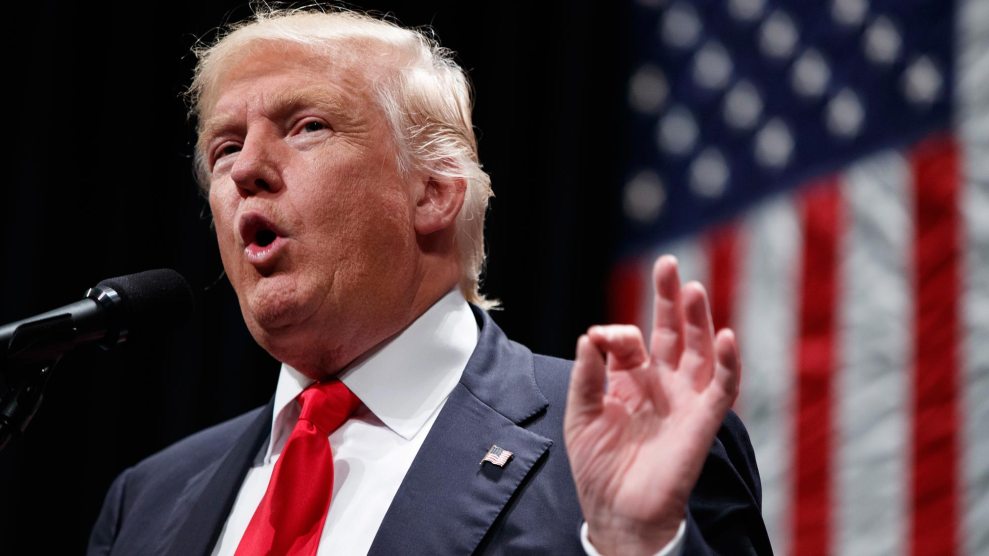
Mother Jones illustration; Shutterstock
This post was originally published as part of “The Trump Files”—a collection of telling episodes, strange but true stories, and curious scenes from the life of our current President—on September 27, 2016.
There’s nothing Donald Trump loves more than surrounding himself with beautiful women. “It doesn’t really matter what [the media] write as long as you’ve got a young and beautiful piece of ass,” he once told Esquire magazine. And where better to put himself in that company than poolside at his ritzy private club?
Trump’s post-Ivana-divorce parties at his Mar-a-Lago club were stocked with “models from Miami, who floated around the patio and pool,” wrote the Washington Post‘s Michael Kranish and Marc Fisher in their new book, Trump Revealed. Ron Rice, who founded the Hawaiian Tropic pageants in which Trump’s second wife, Marla, had competed, recalled to the Boston Globe how Trump would turn to him to fill out his guest lists. “He’d call me up and say, ‘I’m having a big party. Bring your girls in,'” Rice said. “So I’d bring in a bunch of models. Sometimes he gave us rooms at Mar-a-Lago.”
“Trump insisted on at least a three-to-two ratio of women to men at his bashes,” Kranish and Fisher reported. That got the approval of Roger Stone, the peddler of conspiracy theories and former Nixon aide who’s a longtime Trump adviser. “There’s a hundred beautiful women and ten guys,” Stone told the Post. “‘Look, how cool are we?’ I mean, it was great.”
At least some of the young women came because they thought it would help their careers. In 1993, Trump hosted the finals of the American Dream Calendar Girls pageant in Atlantic City, New Jersey, and a spot in the calendar meant modeling gigs and visibility. “None of the women competing wanted to miss a chance to impress a judge like Trump,” wrote the Tampa Bay Times in a profile of Trump.
Trump apparently saw it differently. “What it was was a way to get his friends together and bring a bunch of pretty girls with them,” said George Houraney, who owned the pageant with his then-wife, Jill Harth. Harth said Trump groped her during a Mar-a-Lago party in 1993, and then “kissed, fondled, and restrained” her during a visit to his daughter Ivanka’s bedroom, according to the Globe. Harth sued Trump but dropped the lawsuit in 1997. She told the Post that dropping the suit was a condition of settling a separate breach-of-contract suit Houraney and Harth filed against Trump. Trump strenuously denied Harth’s story.
The suit also mentioned other alleged sexual advances by Trump. The Globe described one encounter with a pageant hopeful:
In the predawn hours, a contestant named Lauren Petrella—who, at age 22, was 24 years younger than the 46-year-old Trump—allegedly found Trump, unannounced and uninvited, in her bed.
“You said you don’t sleep with men on the first date,” he told her, according to the lawsuit filed by Harth. “Now it’s the second date, and here I am.”
Another Trump guest was Jeffrey Epstein, the billionaire accused of raping numerous underage girls. “That was one of his best buddies,” Houraney told the Times. “He threw a party one night just because of Epstein. He said, ‘The other guys aren’t coming, but I don’t care because Jeff’s coming.'” The Trump campaign denied that Trump was “best buddies” with Epstein, telling the Times that “Mr. Trump only knew Mr. Epstein socially as someone who would occasionally use the club.”














